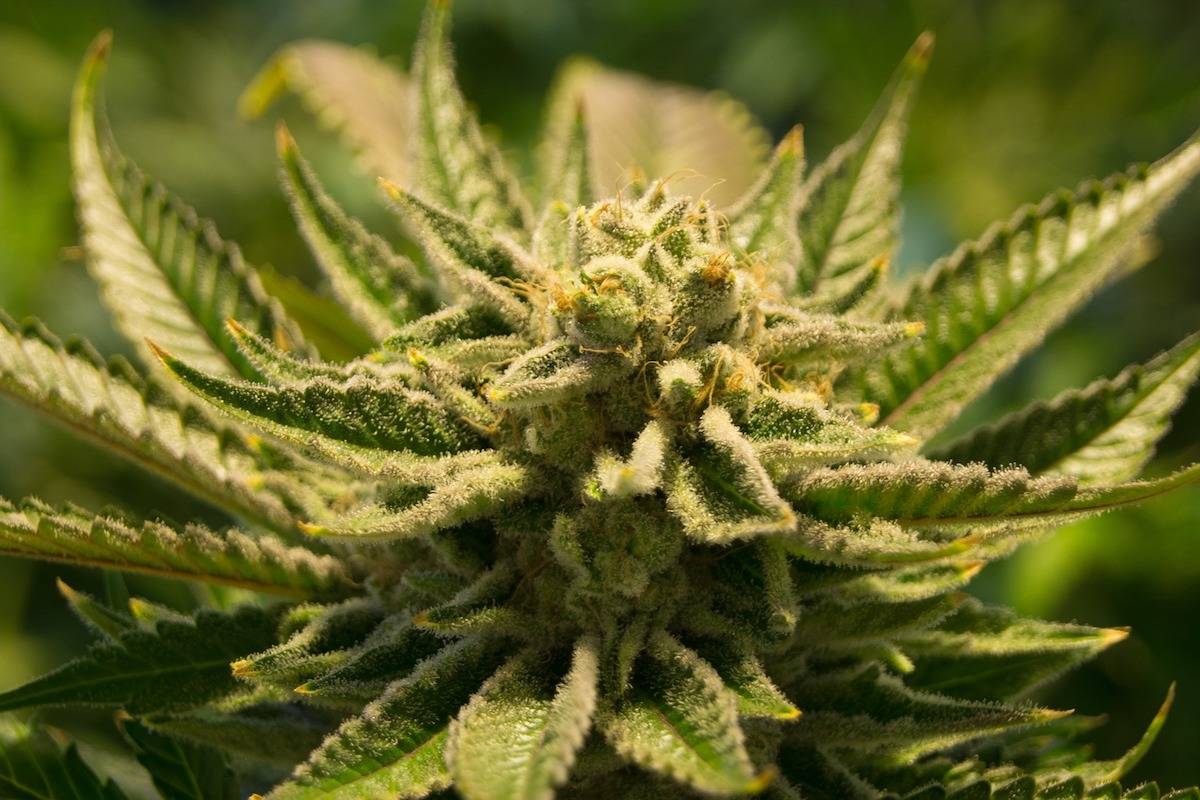Activism
High Times in Southern California
Dry herbs, pre-rolls, oils, vaporisers, drinks, balms, and a host of different kinds of edibles were all available to the seasoned and the curious.

Feeling a little bleary eyed but excited after a long flight, I took an Uber to one of the few dispensaries in Los Angeles that has managed to get a temporary license for the sale of recreational marijuana. Not everyone managed to get one on 1 January 2018. This particular dispensary in West Hollywood has been operating since the 1990s, when medical cannabis gained a foothold as a potent painkiller used by victims of AIDS.
The driver slowed down as we approached the dispensary. There was a sign but it wasn’t very clear and the shop windows were tinted black. “It looks closed,” I said. “That’s what they all look like,” my driver replied. I got out of my ride and joined the back of a small queue. “How long do you think this will take?” I asked a guy in a black t-shirt who looked like a staff member. “About an hour from where you are now? We’re going as fast as we can ma’am.” “No worries. Some people have been waiting for this for decades, so what’s another hour?” I said.
I subsequently discovered that some of those waiting in line had medical cards, but still wanted to queue up to experience the freedom of full legalisation. In its own way, I found this to be an oddly humbling political act, since medical card holders pay less tax and there was no queue at all at the entrance reserved for medicinal purchases.
I got chatting to those waiting with me, most of whom were young men of various ethnicities. They were all there because they wanted to be among the first to purchase cannabis in the new legal market. They were a bit hazy on matters of regulation and policy but more than happy to enlighten me about the benefits of various products and strains, and their respective levels of tetrahydrocannabinol (or THC, marijuana’s principle psychoactive component). Cannabis, they reported, helped relieve all manner of ailments, including back pain, anxiety, depression, sleep problems, and IBS. But time and again, they simply pointed out that “Alcohol makes me do crazy shit and weed just relaxes me.”
In return, I was able to inform them that Indica was originally from India where it had been used as medicine for thousands of years, and that Sativa was originally from South America but had been brought to Mexico by European missionaries. Because it was used by soldiers, it was incorrectly thought for a while that Sativa made people violent, as anti-dug propaganda like the infamous 1936 film Reefer Madness would later claim. But I had no idea which strand I ought to buy or what level of THC I was likely to prefer.

At the front of the dispensary was a waiting area where customers went through a quick registration process. The product display area was crowd controlled so that everyone was served by their own ‘budtender.’ I overheard another customer – a gruff late middle-aged man with the physique of a manual labourer – tell his budtender that he “hadn’t bought weed since the ’70s” and ask for a recommendation. The stocky, tattooed budtender pulled out some pre-rolls and advised in a soft, authoritative voice that these were his personal favourites. A few decades ago someone like this might have been a drug dealer scuttling from the law feeling indecent and ashamed. Now he is a cannabis sommelier, offering his expertise on taste, potency, and sensation. I could tell that he was proud of his knowledge and passionate about his job. In fact, all the staff members I met at the various dispensaries I visited during my stay were infectiously enthusiastic about their products and helpful in sharing their experiences.
Dry herbs, pre-rolls, oils, vaporisers, drinks, balms, and a host of different kinds of edibles were all available to the seasoned and the curious. Here was Adam Smith’s vision of the free market in action: the diversity and innovation evident in the plethora of products on offer was astonishing and slightly overwhelming. Once purchased, the goods were packed into a reusable smell-proof bag.
My inner hippy drew me to a product stand displaying dark brown glass bottles with apothecary style labelling filled with elixirs for various ailments and conditions. In addition to cannabis extracts, their ingredients included lavender, honey, passion flower, rosemary, ginkgo, and the like, and were produced by a company of female herbalists who have been operating in California for more than 25 years. The elixirs, I discovered, could be taken via the dropper or mixed into a variety of recommended drinks, spritzers, or even ice pops.
The delivery system advertized on the TV show High Maintenance complements the cannabis market beautifully. California has had online consultation, prescription issue, and delivery for years under the medical system, and products usually arrive within a couple of hours of an order. A text message informs the customer that their delivery is outside and a pleasant young man in a little Toyota Corolla hands over a pack of pre-rolls. “This is the best stuff in town,” he assures me. You then get another text to check the delivery has been successfully and satisfactorily completed.
A dispensary I visited in San Diego even had a double-decker bus with an open top available for plantation tours. Some of the dispensaries were super-cool and high tech. I sat in the waiting area of one located in the middle of a desert surrounded by fields of wind farms. It was a Friday evening, the sun was setting, and the place was packed with customers from places as far-flung as Idaho and Florida (where cannabis is still prohibited), all complaining about their states’ absurd drug laws.
When Trump proclaims that unemployment is at 45 year low, he may be reluctant to acknowledge the role of California’s new drug industry in creating new jobs. As the American journalist and California native Joan Didion noted in her memoir Where I Was From, California has a long history of great new industry born of federal assistance such as the weapons and the rocket industries, both of which boomed for a while but which couldn’t be sustained as local economies. In the past, Didion says, California has also invested in agriculture unfit for its geographical conditions. However, the hot and dry California climate is ideally suited to the cultivation of cannabis plants and the new legislation, whether by accident or design, protects small dispensaries and medium-sized businesses by allowing private investment and only one license per company. Nevertheless, Forbes is already predicting that a company like Monsanto will get in on the act in about five years time.
This young market is still inefficient. California has a limited number of licenses it can give out and no one knows what will happen when they use up their quota. They probably won’t want to embarrass their state like Nevada, which had to pass urgent legislation to avoid running out of weed. Furthermore, the license application process for recreational sale is presently ridiculously complicated and expensive, and poses legal risks for wary investors who are not yet ready to plunge in but are hovering and salivating in anticipation.
The 20th century saw political interference with personal drug use on a global scale, formally set out in the 1961 United Nations Single Convention on Narcotic Drugs. The origins of cannabis prohibition are deeper and carried concerning racial undertones. Prohibition in California began in 1914 when Henry Finger, a San Francisco wine company lobbyist resolved to stamp out “Hindoo” culture and the cannabis use with which, in his mind, it was associated. Finger was also one of two representatives from the United States who pushed for cannabis criminalisation at the 1912 Hague International Opium Convention that led to prohibition of cannabis worldwide.
It was the U. S. that championed the failed policy of prohibition. However, times and attitudes have changed. By the end of 2018, more than 100 million people across the world will have access to a legal cannabis market. No state that has legalised cannabis in whole or in part has seen an increase in usage, but the black market produced by prohibition is now being recaptured by the real economy, bringing hope and relief to many. Incarceration rates can be expected to decline across America as people who would otherwise be entangled in a punitive criminal justice system are being allowed to make an honest living. California, once a state known for its harsh drug penalties is now leading the way in demonstrating that change is possible.






